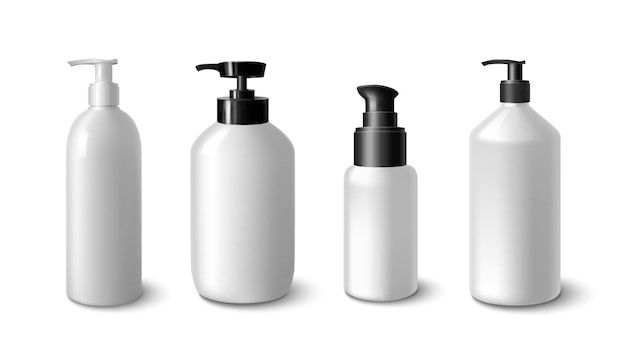britons throw away additional than 4m tonnes of consumable food and drink from their residences ever year and a revamp of the sellbydate label could save completely edible meals from the bin bag.it was though researching how blind people today use public...britons throw away additional than 4m tonnes of consumable food and drink from their residences ever year and a revamp of the sellbydate label could save completely edible meals from the bin bag.it was though researching how blind people today use public transport that an industrial designer stumbled across an innovation for hold our fridges stocked a small bit longer. solveiga pakstaite said the study led to her questioning how the blind can verify sellby dates.&ldquoone day i believed &lsquohow on earth do blind folks know when their meals expires since they can&rsquot study the expiry dates and they don&rsquot know what to eat in the fridge initial&rsquo,&rdquo she mentioned.the result of her curiosity is a function in progress named the &lsquobump mark&rsquo a label which is attached to meals packaging and adjustments shape when the create deteriorates. when the meals is fresh to consume, the label is smooth and curved, but when it has decayed, a plastic bump emerges to warn the consumer when fingers are run over it.stretching beyond the desires of blind persons from exactly where the thought originated, the new labelling is getting offered as an option to regular best before and expiry dates. pakstaite claims it will give a more accurate indication of freshness and save on wastage from shoppers throwing out generate which may be good to eat but be past the date on the packaging. according to the uk government, £12bn worth of meals and drink is binned each year, most of it edible. and it is a worldwide problem. the food and agriculture organisation of the united nations estimates that one third of all food which is developed for human consumption is wasted, with fruit and vegetables going in the bin far more than any other produce. in europe, about 100m tonnes of meals are thrown away each year.describing how she created the inspiration emerged from her analysis, pakstaite added &ldquoonly a single third of visually impaired men and women are in paid employment so the rest of them have to survive on really modest rewards and they cannot truly afford to be throwing meals away willynilly. they also don&rsquot want to get ill so they surely have caution but they realise how a great deal money they are wasting, not just food waste.&rdquoshe stated &ldquoi knew straight away that it couldn&rsquot just be a option that could just assist blind folks mainly because no retailer would take on and devote money on helping this extremely modest group sadly. that is when i went back to my original query, &lsquohow do blind people know when their food expires&rsquo and then i thought &lsquohow does anyone know&rsquo we have trusted these random dates that are place on and no one essentially knows when their meals expires and that is why we are throwing away so much food.&rdquoshe developed her device by making use of gelatine, a foodstuff made from the bones of animals and normally applied as a setting agents for deserts. when it sets, it becomes a solid jelly but then turns liquid when it expires.prototypes for pakstaite&rsquos invention seem on the corner of meals packets as a modest triangle. it consists of a layered pod on the bottom is a sheet of plastic with bumps on it, which is then topped with a gelatine solution and sealed. gelatine, becoming an organic material, deteriorates at the same rate as the meals that is in the packaging. so when the jellylike gelatine goes &ldquobad&rdquo and turns to liquid, it indicates the meals has gone poor as well. but how can you inform that the gelatine, sealed in its tiny corner on a packet of cheese, has gone negative the plastic bumps can be felt at the bottom of the triangle for the reason that the tough jelly buffer has gone. the gelatine option mimics the reaction of the food to altering temperatures. if it is kept in the cold, it will stay strong for longer whereas if it is put in warmer conditions like a automobile boot or on a kitchen worktop, it will deteriorate quicker just as a piece of meat would.the quantity of gelatine utilized in packaging reflects the anticipated lifespan of the meals. smaller amounts of gelatine deteriorate far more quickly, so a piece of cooked chicken &ndash which desires to be eaten within days &ndash calls for much less gelatine than, for instance, a piece of cheese.&ldquothis plastic bump would be stuck onto the package at the identical time as the meals is at its freshest and this essentially starts decaying at the very same time. if you take it out of the fridge, the food starts expiring faster of course since of the greater temperature and this is going to start expiring faster as nicely,&rdquo mentioned pakstaite.&ldquoi have fundamentally taken a different food to inform you what is happening to the food inside the package. it is just that this variety of meals gelatine has the exclusive home of altering states and gelatine has this property of when it absolutely expires, it releases its bonds because all of the bacteria has eaten these bonds and it turns back into a liquid. so when you run your finger over the best, you can really feel the bumps underneath. it is definitely easy &ndash it is a sandwich which breaks down and reveals the bumps underneath.&rdquothe advantage of the technique, she mentioned, is that it avoids the current calculation of ideal before dates which can be also conservative, resulting in meals getting thrown out. under her plans, the &lsquobump mark&rsquo would be applied at the time of food packaging so that if crates of meals have been left for periods outdoors of refrigeration, the effect on the food would be clear as the gelatine would deteriorate at the identical price as the meals, she mentioned. &ldquoby having this the retailer is possessing to be totally diligent and regimented and honest.&rdquothe disadvantage of employing gelatine has develop into apparent in the quantity of vegetarians who have said they would not invest in solutions employing labelling which entails animal make, said pakstaite, which means she will appear for an alternative remedy or may well limit its use to dairy and meat.nevertheless in improvement, how the program will operate in significantscale meals production is not but defined. one particular possibility would be for suppliers to licence the technology and the &lsquobump mark&rsquo getting activated when the food is packaged although they will have to choose how to ensure the devices are activated at the time of production, she mentioned. nonetheless, last year the invention won the prestigious james dyson award, set up by the british inventor to encourage a new generation of design engineers.outdoors of meals, there is also the possibility that the packaging could be used for fresh cosmetics, which also have a perishable date. so far, tests have shown the gelatine can be extended to a lifespan of 1 month, while pakstaite believes it may perhaps be longer.she hopes that the invention could be formally introduced as a portion of food packaging by the end of the year, and lower the scale of britain&rsquos wasted food mountain.our editors found this article on this site using google and regenerated it for our readers. 






